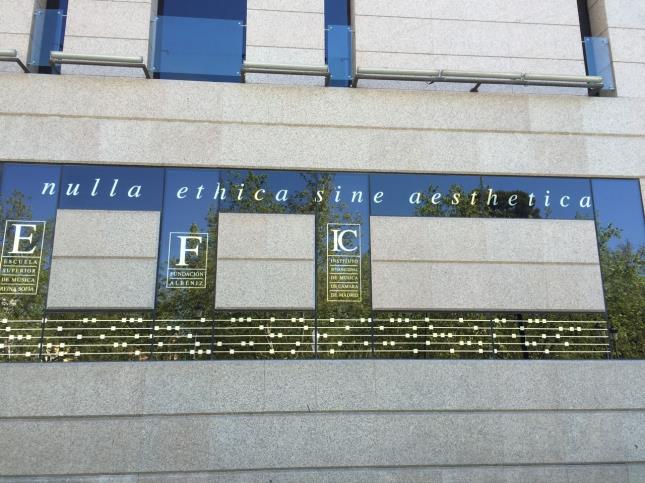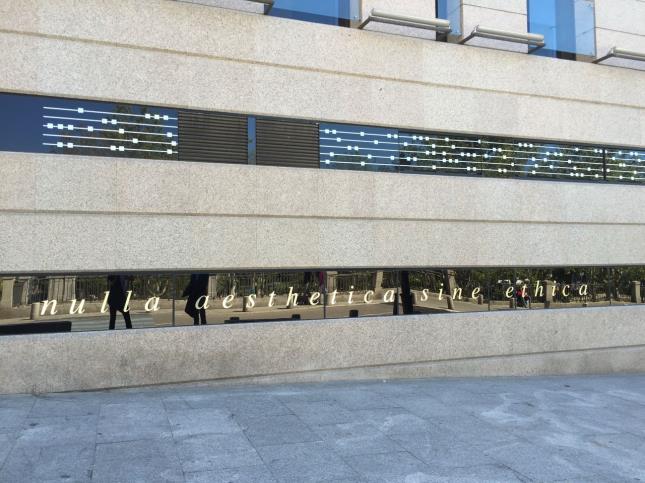“Beauty is truth, truth beauty – that is all ye know on earth, and all ye need to know.” These are two lines from the Ode on a Grecian Urn by the English Romantic poet John Keats. We know, of course, that he is just following in the footsteps of the Platonic tradition but his words inspired me to look whether there is a link between beauty and knowing.
To know is to perceive an aspect of the timeless truth. If beauty is truth, then perceiving beauty must be a form of knowing. Beethoven seems to think this as well in his words to Bettina Brentano: “Music is the one incorporeal entrance into the higher world of knowledge which comprehends mankind but which mankind cannot comprehend.” He also wrote: “Music is a higher revelation than all wisdom and philosophy.”
So, can beauty transmit to us a form of knowledge? What do you think? What happens when you are moved by beauty? When I am moved by beauty, I somehow know that I live in a world of harmonious order, that I live in a cosmos. I also somehow know that there is meaning and harmony, unity and a law of balance and equilibrium. That there is a place for everything and that everything has its place, that everything is of value and if it weren’t there, there would be a gap or hole. I also know that I am part of this whole and that I have a place. It is not a rational, factual knowing but rather a contemplative and intuitive knowing. A knowing that creates order within my thoughts and emotions and that has the power to transform me by changing the way I think and feel. Maybe this is what a budhic form of knowing must be like. Ineffable and yet at the same time real and concrete. Maybe we can say that beauty can lead us to another dimension of knowing and adds a new dimension to our knowledge.
On a lower level, we could also say that beauty facilitates knowledge. That it can act like a catalyst that opens our minds and therefore helps us to learn and to think. On the level of art, the level of creating beauty and participating in the process of making it manifest, there is also plenty of evidence that this enhances our cognitive abilities. Only a few years ago there was a long-term study at Boston College which compared two groups of children who were tested and found on average to be equal in a variety of skills. Then one group of children were taught the violin and the piano, while the other group had no musical training. After three years, the children in the music group were superior to the others, not just in manual capacity and musical perception, but also in mathematical and verbal performance and in their total cerebral mass. It seems that producing music activates brain systems that also enable us to work better in completely different fields of knowledge as well. Many studies have documented that musically trained children and adults outperform their untrained peers on tests of academic aptitude, especially in mathematics.
Last but not least, there is also a connection between scientific discoveries and philosophical ideas that have stood the test of time: they tend to be beautiful. Simple, clear, appealing to us not just in a rational way but also an intuitive way. So, paraphrasing the words of Beethoven, I do think that beauty can be the entrance to a higher form of knowing.
If beauty is truth, it must also be interchangeable with the good. When I was in Madrid this year, I had the rare opportunity to have a couple of hours to walk around this beautiful city, without any specific goal or direction. Suddenly a few words written on a modern looking building stopped me in my tracks: Nulla ethica sine aesthetica – No ethics without aesthetics. Surprised and delighted I was just about to think that it would also work the other way round. Then I discovered that, in fact, this was also written on the building: Nulla aesthetica sine ethica – No aesthetics without ethics. I inspected the building more closely and realized that it was the Queen Sofia College of Music, established in 1991 by Paloma O’Shea to provide young Spanish musicians with a solid artistic education. To discover one of the main tenets of our work in Tristan on the walls of a music school is not only a wonderful example of synchronicity but also a ray of hope. Like a ray of light, sent by Apollo.


Sabine Leitner
